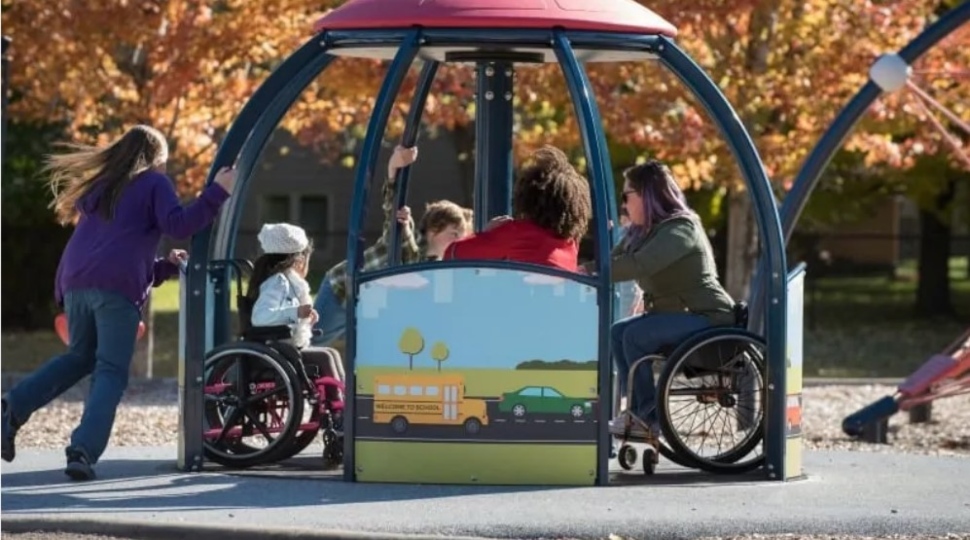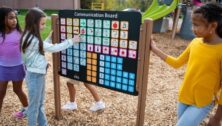General Recreation: The Evolution of Playground Design

Playground design has come a long way from the traditional steel structures fixed in concrete found in your neighborhoods and schoolyards, according to an article in the Play and Playground Encyclopedia.
These days there is a wide range of equipment and features with imaginative and innovative elemetns to keep kids interested.
Playground design has been affected by the Americans With Disabilities Act, which was signed in 1990. The Act is designed to assure full equality for people with disabilities.
Initially, to satisfy the requirements, accessible playgrounds were often designed to only provide an accessible route to the playground equipment, with little thought to offering inclusive play.
Then, a group of architects, product designers, engineers and environmental design researchers collaborated on a set of guideline principles for “the design of products and environments to be usable by all people, to the greatest extent possible, without the need for adaptation or specialized design.”
The concept was called universal design.
The seven principles are:
1. Equitable Use – The design is useful and marketable to people with diverse abilities.
2. Flexibility in Use – The design accommodates a wide range of individual preferences and abilities.
3. Simple and Intuitive Use – Use of the design is easy to understand, regardless of the user’s experience, knowledge, language skills, or current concentration level.
4. Perceptible Information – The design communicates necessary information effectively to the user, regardless of ambient conditions or the user’s sensory abilities.
5. Tolerance for Error – The design minimizes hazards and the adverse consequences of accidental or unintended actions.
6. Low Physical Effort – The design can be used efficiently and comfortably and with a minimum of fatigue.
7. Size and Space for Approach and Use – Appropriate size and space is provided for approach, reach, manipulation, and use regardless of user’s body size, posture, or mobility.7
The ultimate goal behind the guidelines is to provide “inclusive play where every child, regardless of ability or disability, is welcomed and benefits physically, developmentally, emotionally and socially from the environment.”
You can find out more about playground design at the Play and Playground Encyclopedia.
About General Recreation
Since 1973, General Recreation Inc. has been a leading distributor of commercial playground equipment. They serve Pennsylvania, New Jersey and Delaware, and have helped hundreds of community leaders and organizations build playgrounds that are safe, aesthetically pleasing and made to last.
General Recreation project are supported by expert and trusted services, including site evaluation, playground design, installation and community build services.
Whether your playground will consist of outdoor playground at a pre-school or a large community playground, experienced commercial playground experts will help you every step of the way.
Join Our Community
Never miss a Delaware County story!
"*" indicates required fields

























![95000-1023_ACJ_BannerAd[1]](https://delco.today/wp-content/uploads/sites/3/2023/03/95000-1023_ACJ_BannerAd1.jpg)






